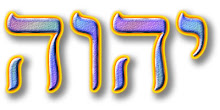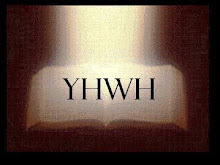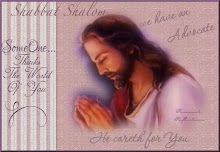ADAR 27,5769 Second Day Yom Shaynee
The Torah portion for this week is VAYIKRA in Leviticus BUT I want us to stay in Exodus just for this day because the Temple Institute in Israel has such a wonderful teaching about the Priestly Garmets. Read Exodus 28...take time reading it...ingest what the LORD asked of Moshe and the people and see how splended and wonderful His priests were....
"Make holy garments of splendor and of beauty."
(Exodus 28:2)
Tremendous attention is paid to detail in G-d's instructions for the garments of the High Priest, Aharon. Tremendous skill and knowledge is required to produce and weave the fibers for the raiments, and no less so for the cutting, polishing, inscribing and setting of the twelve stones of the breastplate, and the two epaulets that rest upon The High Priest's shoulders. Only the most accomplished and gifted of gold smiths would take upon himself the task of fashioning the tzitz - the dazzling golden head-plate that would rest upon the High Priest's brow. But why all the pomp? What is the purpose of the "splendor and the beauty?"
Torah states that a priest who is not wearing his priestly vestments cannot officiate in the Holy Temple. In effect, he does not become kohen - priest - until he dons his uniform. The clothes, literally, make the priest. The identity of the individual priest is insignificant, and so it should be, especially so concerning the High Priest - Kohen Gadol.
For while the garments of "splendor and beauty" are fashioned in such detail so as to reflect the very splendor and beauty of man - the jewel in the crown of G-d's creation, the only way in which the High Priest can successfully wear such splendor, the splendor of mankind itself, while performing his sacred priestly duties, is by totally and completely annihilating his own sense of self, his own ego, before he enters the courtyards and chambers of the Holy Temple. For when the Kohen Gadol enters the Holy Temple to perform the Divine Service he does so as a representative of every man. Standing within his many garments of gold and azure and purple, the royal colors that G-d has bequeathed to man, the High Priest is you and me. His very vestments vest within him the sublime responsibility to stand before G-d on behalf of the children of Israel and all the nations.
At no time is this more true than on Yom Kippur, the Day of Atonement, when the Kohen Gadol enters into the Holy of Holies itself, to set before the Ark of the Covenant the golden shovel of burning incense. Conversely, at no time is the Kohen Gadol more in need of the introspective and selfless prayer of the congregation of Israel that awaits beyond the confines of the Holy Temple.
Aharon, the first High Priest was "the brother of." Specifically, he was, of course, the brother of Moshe rabbenu - Moses our master. But the appellation seems most appropriate of the responsibility of High Priest. He is neither our superior nor our subordinate. He is our brother. And as our brother he stands before G-d in the "garments of splendor and beauty" that we, the people, have fashioned for him.
Now, please go here, to the Temple Institute site and enjoy a pictorial journey of learning about the way of our Elohim's Priests
http://www.templeinstitute.org/beged/priestly_garments.htm
Subscribe to:
Post Comments (Atom)










very cool! I'm gonna check out this temple institute website!
ReplyDelete